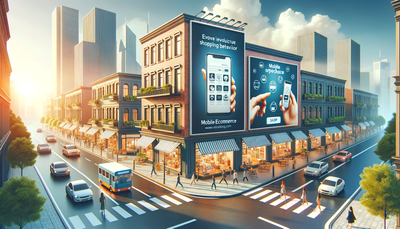Implementing Augmented Reality in Your eCommerce Store
Augmented Reality (AR) is revolutionizing the eCommerce landscape, offering innovative ways to enhance the online shopping experience. This article explores the implementation of AR in eCommerce stores, focusing on its potential to improve customer satisfaction and reduce return rates. We'll delve into various AR tools for product visualization, discuss effective implementation strategies, and examine methods to measure the impact of AR on sales. By leveraging AR technology, online retailers can bridge the gap between digital and physical shopping experiences, allowing customers to virtually try products before purchasing. This not only boosts confidence in buying decisions but also creates an engaging and interactive shopping environment that can set your eCommerce store apart from competitors.Table of Contents:

Understanding AR in eCommerce
Augmented Reality in eCommerce refers to the integration of digital information with the user's real-world environment in real-time. In the context of online shopping, AR typically involves overlaying virtual representations of products onto the customer's physical space through their device's camera. This technology allows shoppers to visualize how items would look or fit in their environment before making a purchase.AR can be applied to various product categories, including furniture, home decor, clothing, accessories, and even makeup. By providing a more immersive and interactive shopping experience, AR helps customers make more informed decisions, potentially reducing the likelihood of returns and increasing overall satisfaction with their purchases.
Do you need a website? Want to build a website but don't know where to start? Our website builder is the perfect solution. Easy to use, and with the ability to customize to fit your business needs, you can have a professional website in no time.
Benefits of Implementing AR in Your eCommerce Store
Integrating AR into your eCommerce store offers numerous advantages for both retailers and customers. Firstly, it enhances the shopping experience by allowing customers to interact with products in a more meaningful way, bridging the gap between online and in-store experiences. This increased engagement can lead to higher conversion rates and customer loyalty.Secondly, AR can significantly reduce return rates by giving customers a clearer understanding of the product before purchase. This not only saves on logistics costs but also improves customer satisfaction. Additionally, AR can serve as a powerful marketing tool, setting your store apart from competitors and attracting tech-savvy consumers.
Lastly, AR can provide valuable data insights into customer preferences and behavior, allowing you to refine your product offerings and marketing strategies. By analyzing how customers interact with AR features, you can gain a deeper understanding of their needs and preferences.
AR Tools for Product Visualization
Several AR tools are available for implementing product visualization in your eCommerce store. One popular option is ARKit for iOS devices and ARCore for Android, which provide frameworks for building AR experiences. These tools allow developers to create AR apps that can seamlessly integrate with your existing eCommerce platform.Another valuable tool is WebAR, which enables AR experiences directly through web browsers without the need for a dedicated app. This makes it more accessible to a wider range of customers and easier to implement on your website.
For specific product categories, there are specialized AR solutions. For instance, virtual try-on tools for clothing and accessories, AR-powered room planners for furniture and home decor, and virtual makeup apps for beauty products. These tools can be customized to fit your brand and product range, providing a tailored AR experience for your customers.
Building a website with SITE123 is easy
Implementation Strategies for AR in eCommerce
When implementing AR in your eCommerce store, it's crucial to develop a clear strategy that aligns with your business goals and customer needs. Start by identifying which products would benefit most from AR visualization and prioritize these for implementation. Consider conducting customer surveys to understand which AR features would be most valuable to your target audience.Next, decide whether to develop AR capabilities in-house or partner with a specialized AR provider. While in-house development offers more control and customization, working with an experienced AR provider can often be more cost-effective and faster to implement.
Ensure that your AR features are user-friendly and easily accessible on your website or app. Provide clear instructions on how to use the AR tools and consider offering customer support for users who may need assistance. Additionally, optimize your AR experiences for various devices and network conditions to ensure broad accessibility.
Measuring the Impact of AR on Sales
To gauge the effectiveness of your AR implementation, it's essential to track key performance indicators (KPIs) that reflect its impact on sales and customer behavior. Some important metrics to monitor include conversion rates for products with AR features compared to those without, average order value for AR-assisted purchases, and return rates for products viewed using AR.Additionally, track engagement metrics such as time spent using AR features, number of AR interactions per session, and share rates for AR experiences. These can provide insights into how customers are interacting with your AR tools and help you refine the user experience.
Consider implementing A/B testing to compare the performance of product pages with and without AR features. This can help you quantify the direct impact of AR on sales and customer behavior. Finally, gather qualitative feedback through customer surveys and reviews to understand the perceived value of AR features and identify areas for improvement.





